Photos and captions by Alessandro Gerelli

The harbor area is the broadest part of the track and where there are stands, garages and the pits.
Our Italian correspondent, Alessandro Gerelli, arrived in Monaco a week after the Grand Prix. He found that there was still a great deal of work going on to remove the race barriers and structures after the 2008 Grand Prix of Monaco.
“I took a look around, and was astonished at the amount and consequent length of the work necessary to restore the road to pre-race conditionsâ€, he said. “TV viewers (and even the lucky one who sits on a stand) probably miss the enormity of the work that are necessary to build and, after the race, to dismount all the structures.”
Since the first race in 1929, the city of Monte Carlo has grown up around the track, with many new high rises taking place of the older, less comfortable but infinitely more charming buildings. But the biggest change to the circuit over the years has been due to safety concerns; the temporary additions of pits, grandstands, triple Armco, tires, high chain link fencing, escape roads and cranes. Today there are 17 miles of Armco and over 20,000 square yards of chain link fencing. Plus the pits themselves are temporary structures only used once a year.
The effect is to make the track look a great deal smaller than it did in the 1950s and earlier. The cars seems to shoot down narrow barrier lined straights and into constricted corners, while the chain link fencing hovers overhead. Gerelli noted that “All of this attention to safety is not only necessary, but all these operations have to be done every year and safety measures are ALWAYS improved, together with the new requirements of TV cameras and visibility from the public stands.”
Eventually, the workers move all race related equipment to an area outside of the city gates, to be dusted off a year hence for the annual Grand Prix of Monaco.

The famous swimming pool with the huge stands which seat 20,000 enthusiasts.
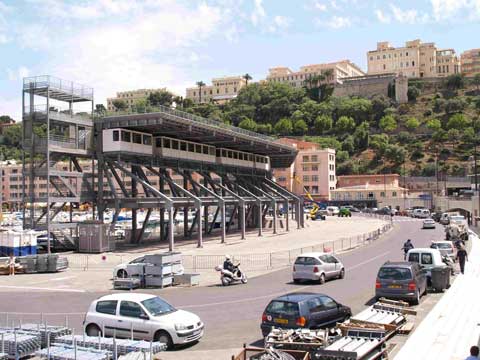
In addition to the removable pits, these are the stands for the media, also temporary structures.
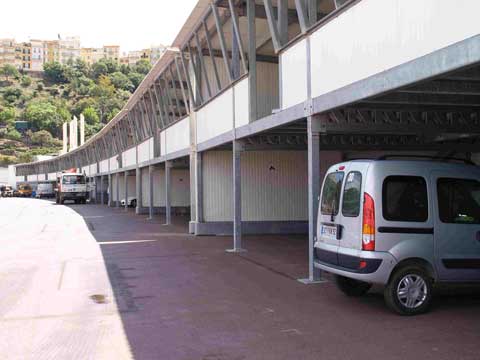
A shot of the pits, placed just on the straight behind the harbor.
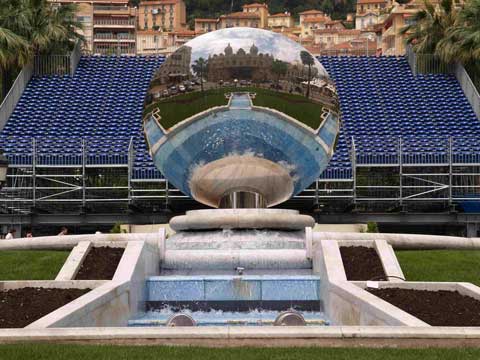
An evocative view of the Casino square, reflected in the sphere.
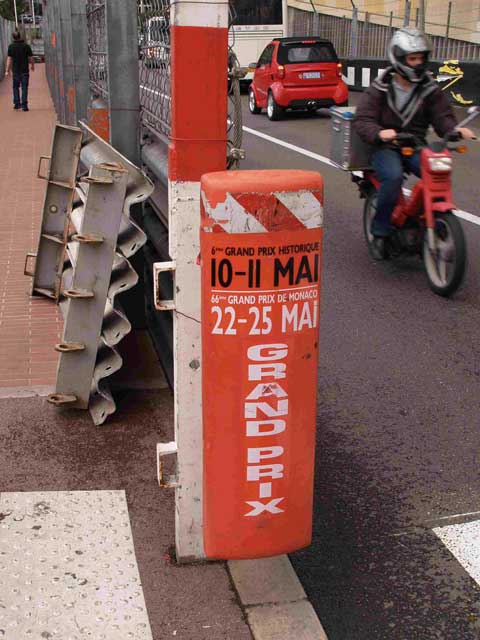
Pasted on the end of the guardrail are the two events that take place here–the F1 race and the Historic Formula One event.
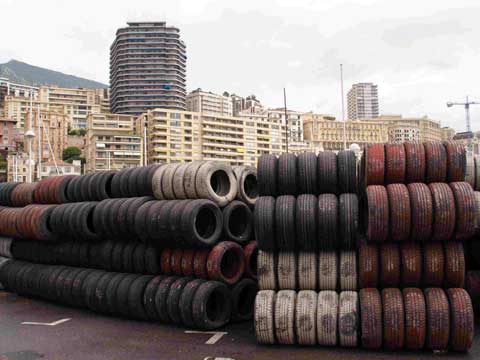
The thousands of tires which are additional crash barriers.
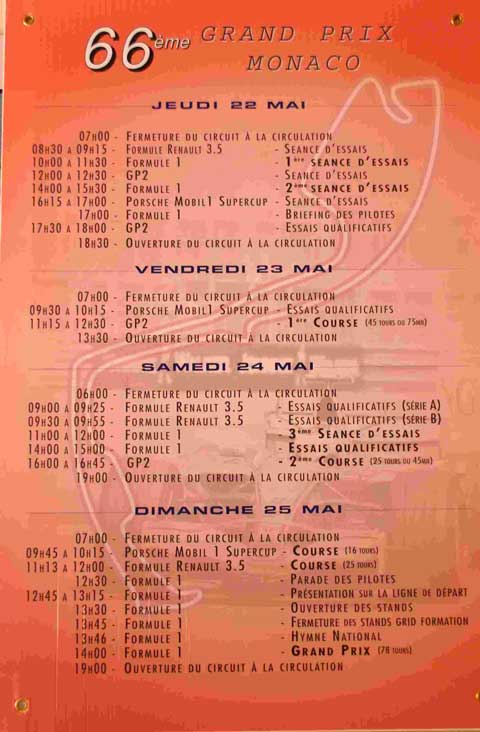
As if it does not really want to end, the official program is still hung outside of the race direction buidling a full week after the event.
I’ve attended the GP de Monaco since ’92 and what has always amazed me is the alacrity with which the disassembly begins. It takes many weeks to erect everything, but on the rare occasions when I’ve stayed in town until the Tuesday after the race (I usually leave by midday Monday) I’ve noted that by Monday afternoon the giant screen visible from the K and M grandstands is already down, and the crews are hard at work taking down the grandstands themselves. It’s quite a profound transition- a couple of years ago I returned for a few days in July, and the town looked so different!
I attended my very first GP, and my first at Monaco in 1973 as a fresh-faced Canadian lad of 19 yrs. Having spent the previous month on the road on my 10 speed bicycle in France and Spain, I “stumbled” upon the race in it’s set-up form. Deciding there and then that I just had to see this event, I sacrificed my rule of 1 dollar a day in Europe, bought my ticket for race day and pit entry, and proceeded to be dazzled by the sights and sounds that only the Monte Carlo GP can give you.
I’ve been hooked ever since and try to watch as many on TV and attend (rarely) in person as I can. The memories of that one event have lasted me a life-time and I love to casually mention that I saw the likes of Graham Hill, Emerson Fittipaldi, Jackie Stewart et al racing that day.
Jeremy Meausette, July 6th, 2008